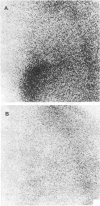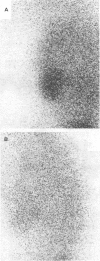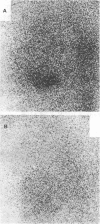Abstract
With the use of 99mTc-labelled stannous pyrophosphate scans positive for myocardial infarction were obtained from 28 patients in the acute stage of the disease. In some cases the scan was positive when the initial electrocardiogram gave equivocal results. Negative scans were obtained from a control group of patients and from eight patients in hospital with chest pain but with no other evidence of recent myocardial infarction.
Full text
PDF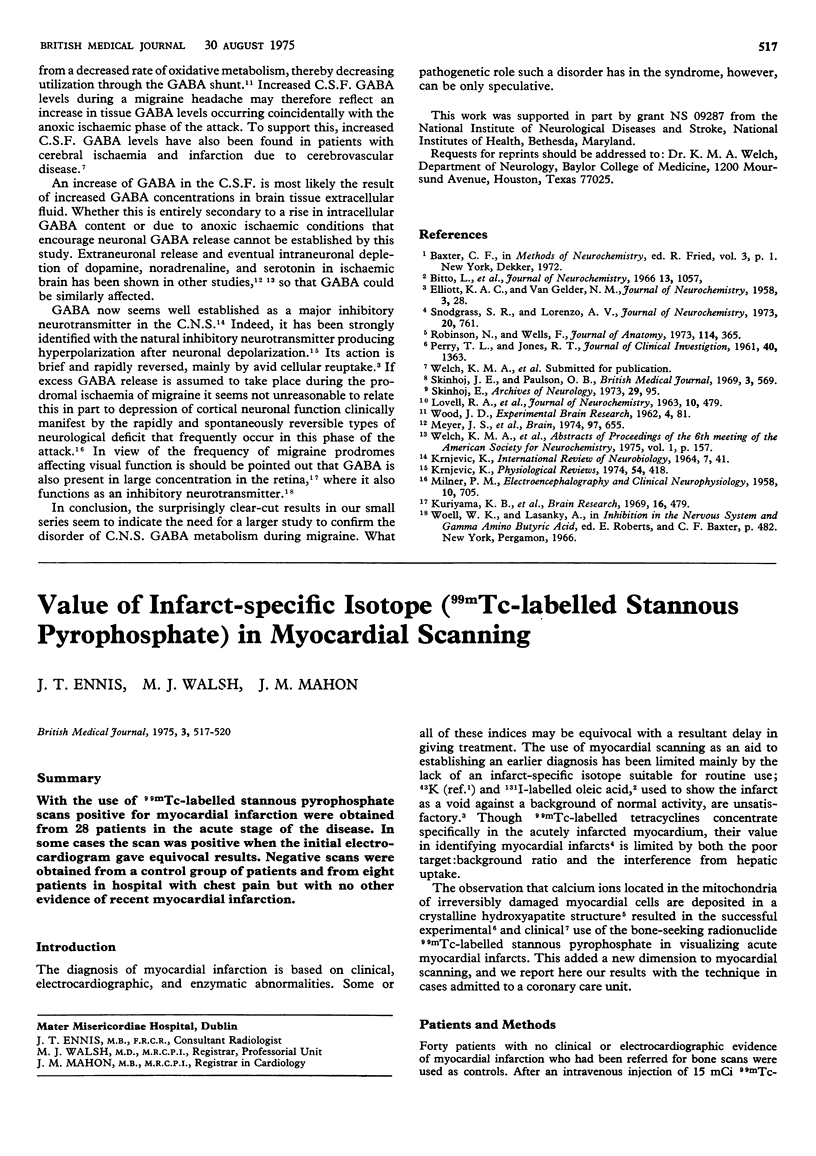
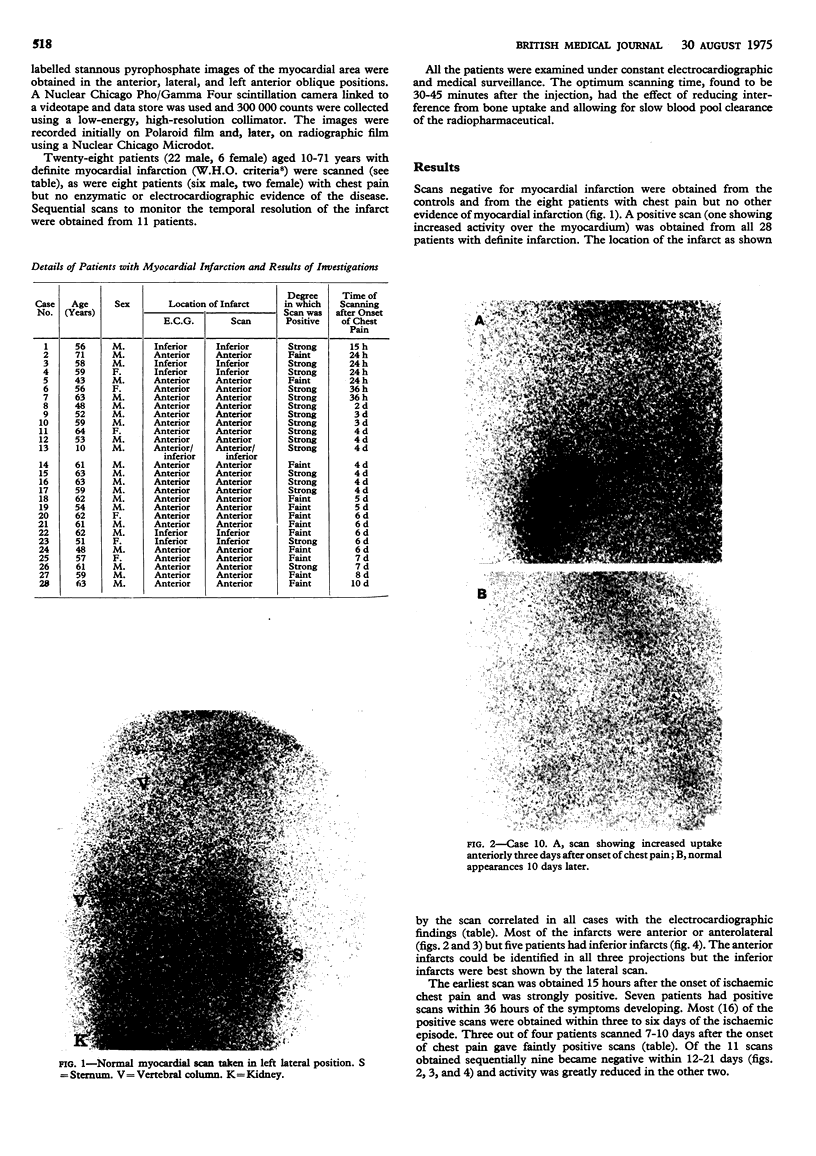
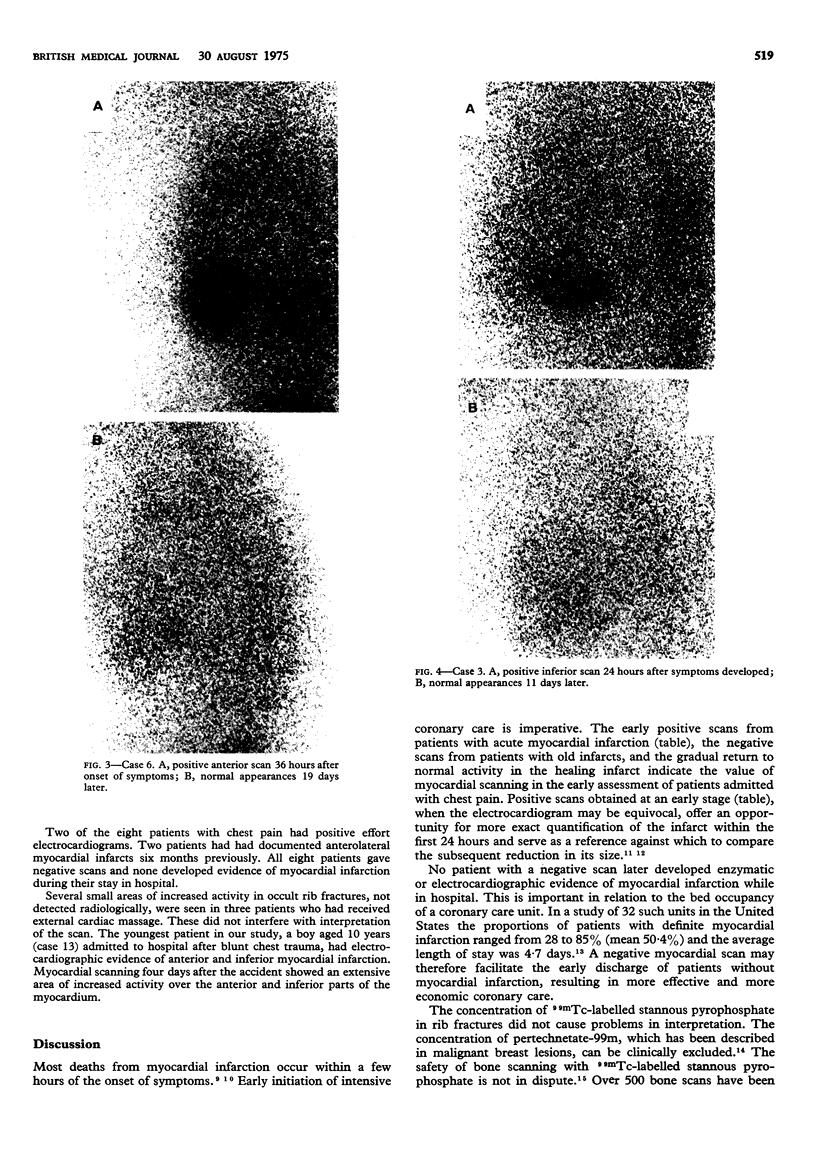
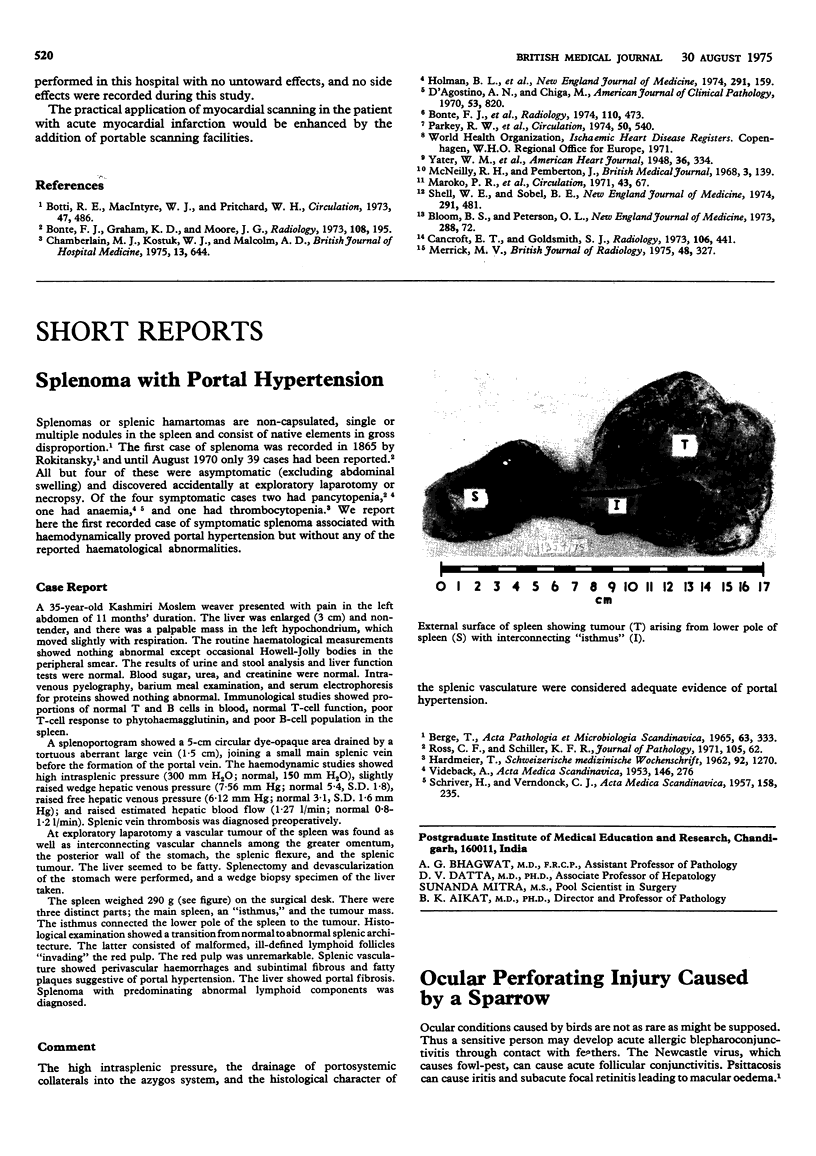
Images in this article
Selected References
These references are in PubMed. This may not be the complete list of references from this article.
- Bonte F. J., Graham K. D., Moore J. G. Experimental myocardial imaging with 131 I-labeled oleic acid. Radiology. 1973 Jul;108(1):195–196. doi: 10.1148/108.1.195. [DOI] [PubMed] [Google Scholar]
- Bonte F. J., Parkey R. W., Graham K. D., Moore J., Stokely E. M. A new method for radionuclide imaging of myocardial infarcts. Radiology. 1974 Feb;110(2):473–474. doi: 10.1148/110.2.473. [DOI] [PubMed] [Google Scholar]
- Botti R. E., MacIntyre W. J., Pritchard W. H. Identification of ischemic area of left ventricle by visualization of 43 K myocardial deposition. Circulation. 1973 Mar;47(3):486–492. doi: 10.1161/01.cir.47.3.486. [DOI] [PubMed] [Google Scholar]
- Cancroft E. T., Goldsmith S. J. 99m Tc-pertechnetate scintigraphy as an aid in the diagnosis of breast masses. Radiology. 1973 Feb;106(2):441–444. doi: 10.1148/106.2.441. [DOI] [PubMed] [Google Scholar]
- D'Agostino A. N., Chiga M. Mitochondrial mineralization in human myocardium. Am J Clin Pathol. 1970 Jun;53(6):820–824. doi: 10.1093/ajcp/53.6.820. [DOI] [PubMed] [Google Scholar]
- Maroko P. R., Kjekshus J. K., Sobel B. E., Watanabe T., Covell J. W., Ross J., Jr, Braunwald E. Factors influencing infarct size following experimental coronary artery occlusions. Circulation. 1971 Jan;43(1):67–82. doi: 10.1161/01.cir.43.1.67. [DOI] [PubMed] [Google Scholar]
- McNeilly R. H., Pemberton J. Duration of last attack in 998 fatal cases of coronary artery disease and its relation to possible cardiac resuscitation. Br Med J. 1968 Jul 20;3(5611):139–142. doi: 10.1136/bmj.3.5611.139. [DOI] [PMC free article] [PubMed] [Google Scholar]
- Merrick M. V. Review article-Bone scanning. Br J Radiol. 1975 May;48(569):327–351. doi: 10.1259/0007-1285-48-569-327. [DOI] [PubMed] [Google Scholar]
- Parkey R. W., Bonte F. J., Meyer S. L., Atkins J. M., Curry G. L., Stokely E. M., Willerson J. T. A new method for radionuclide imaging of acute myocardial infarction in humans. Circulation. 1974 Sep;50(3):540–546. doi: 10.1161/01.cir.50.3.540. [DOI] [PubMed] [Google Scholar]
- Shell W. E., Sobel B. E. Protection of jeopardized ischemic myocardium by reduction of ventricular afterload. N Engl J Med. 1974 Sep 5;291(10):481–486. doi: 10.1056/NEJM197409052911001. [DOI] [PubMed] [Google Scholar]




